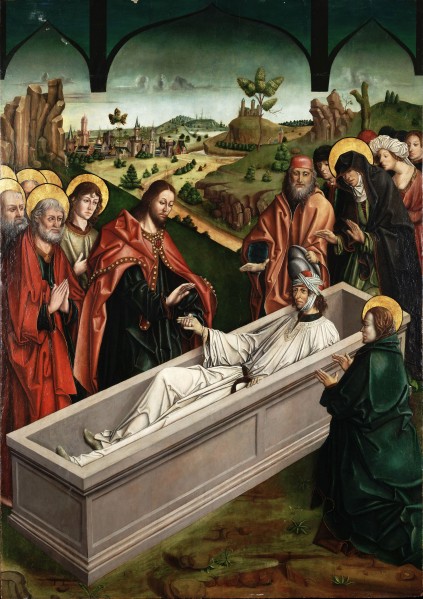Gallego Fernando
Fernando Gallego (c. 1440–1507) was a Spanish painter, and his art is generally regarded as Hispano-Flemish in style. Gallego was likely born in Salamanca, Spain, and worked throughout Castile and Extremadura, most notably in Ciudad Rodrigo, Plasencia, Toro, and Zamora.
Much of his biography has been traced through attributions of his work, but few details are known. The last time he was referred to in a document which implied he was still alive was in 1507, but the date of his death is unknown.
Some works thought to be Fernando Gallego’s are likely instead Francisco Gallego’s, such as San Acacius and the 10,000 Martyrs and the Getty Museum’s Pietà. Francisco is known to have worked in Fernando’s workshop, but their relationship is unknown.
Nothing definite is known about Gallego’s artistic training, but his naturalistic handling of form and technical style strongly link him to Flemish painting, especially the artist Rogier van der Weyden.[1] Early Netherlandish painting of the 15th century was one of the dominant artistic styles, and was significant for its vivid illusionism and its complex iconography, both of which are evident in Gallego’s work.
His mastery of form and composition, as well as his creativity, single him out as one of Spain’s preeminent painters during this time. He took stylistic liberty in many of his works and painstakingly individualized the figures within them, which enhances dramatic appeal of the religious narrative while emphasizing his technical prowess. Much of his work was painted with oil on panel, although he did work with tempera early on.[2] He worked with Master Bartolomé, another painter in Spain, on the Retablo of Ciudad Rodrigo, a tour de force of religious art, depicting Christian history from the Creation to the Last Judgment.
The majority of his work consists of small panels of religious scenes, often used to comprise altarpieces, or retablos. One notable exception is Sky of Salamanca, located at the University of Salamanca, a vast ceiling mural which depicts astronomical scenes and constellations. Only three of Gallego's works are signed, Retablo of San Ildefonso, the Prado’s Pietà, and Virgin of the Rose triptych. Other works have been attributed to him on the basis of style or through historical documents naming him on contracts.





















.jpg)








.jpg)



ليست هناك تعليقات:
إرسال تعليق